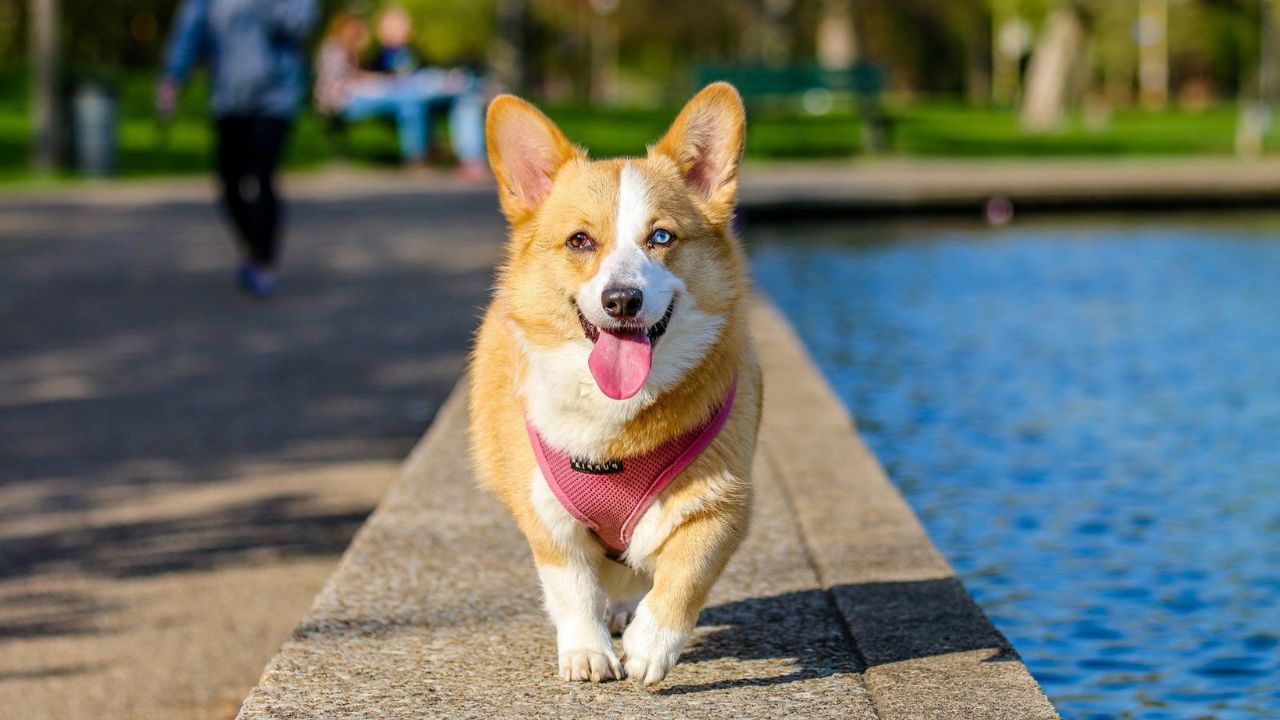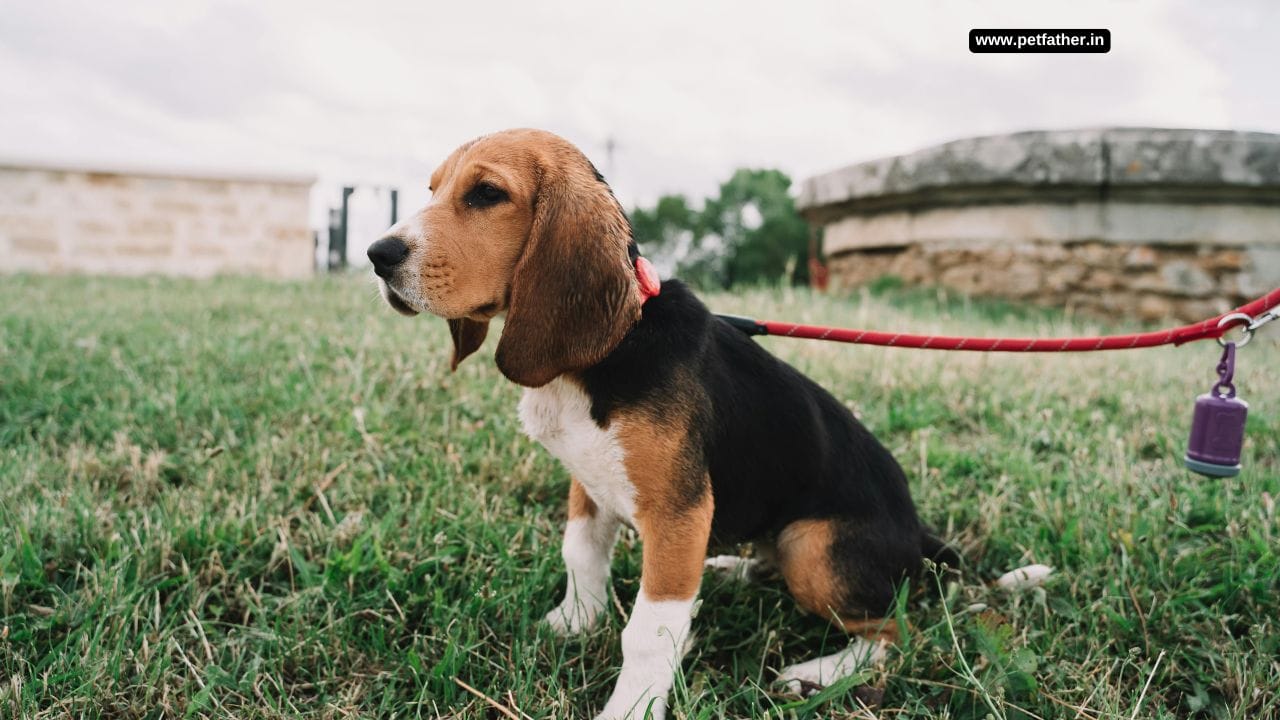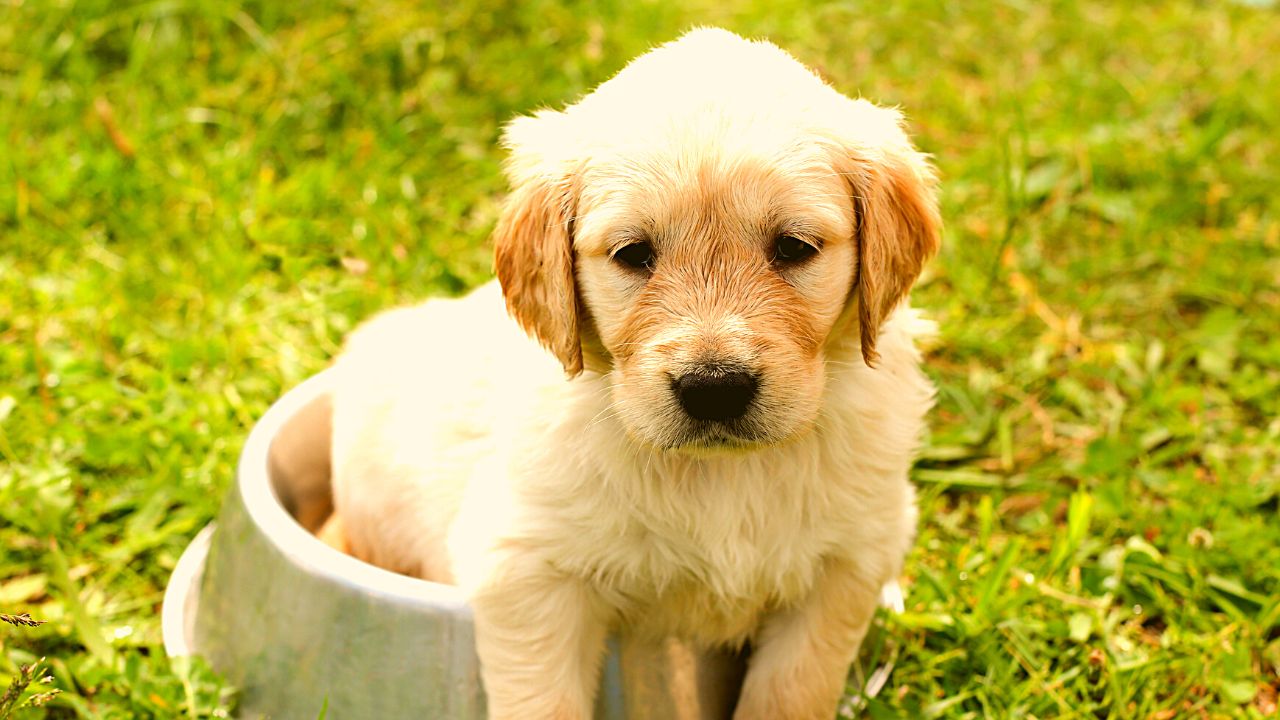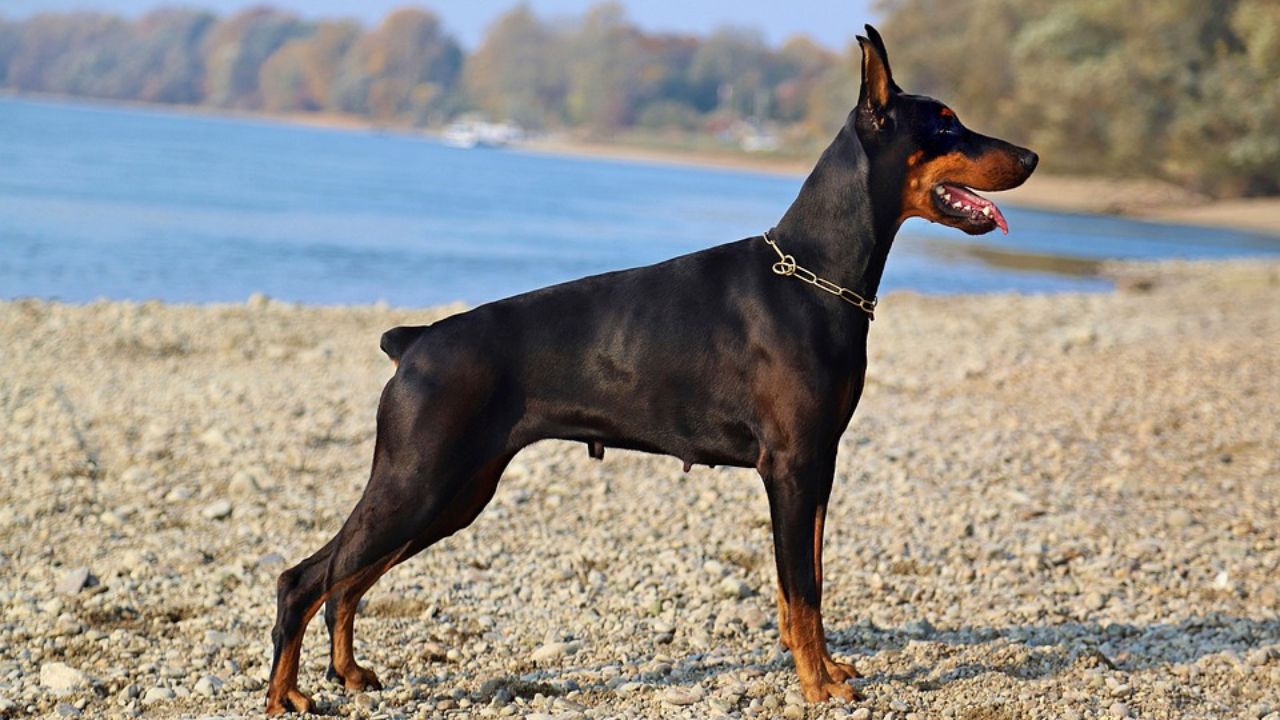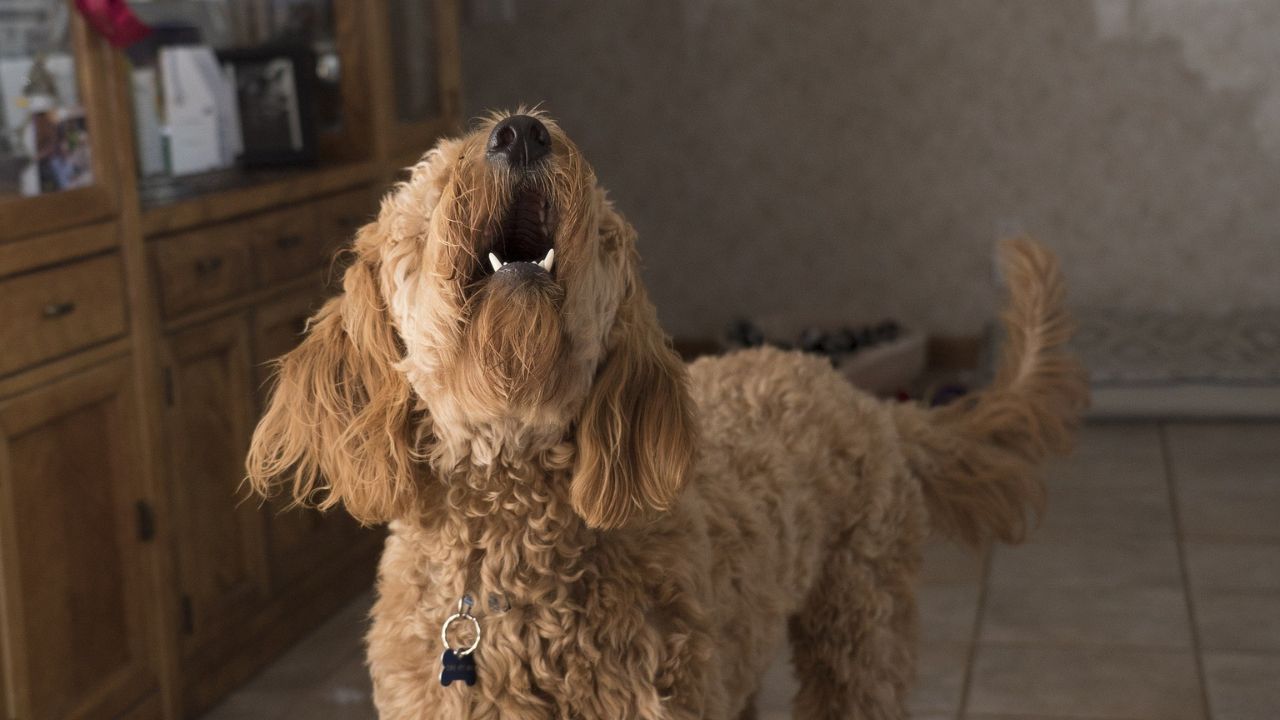
Table of Contents
You must be familiar with various sounds that a dog makes. Barking is the most common sound produced by dogs of all breeds. Over the years, dogs have been selectively bred to bark when there is a need to alert the owner of any suspicious activity.
You might also know the howling sound that is produced mainly by wolves. Dogs used to howl initially, but as they are more domesticated now, there is almost no need to hunt as a pack. Therefore, howling is not commonly heard by dog owners.
Baying is also a dog sound that only a few know. It is different from a dog howling. While howling is a long cry, often in a single note, baying includes repeated barking in short messages. Almost as if the dog is trying to talk and communicate.
Other typical dog sounds include growling, whining, whimpering, or yelping.
What Is Baying?
Baying is a long, deep-throated, continuous barking noise that dogs make when hunting prey.
Baying is made exclusively by scent hounds. It is a communication tool between the hunter and hounds on hunting tracks. The dog makes repeated sounds in short bursts as if they are speaking words.
They are helpful for the hunters to know the location of prey as well as the hound. The tone has a sense of excitement and enthusiasm to it.
As the baying sound acts like a signal for the hunter, the dogs change the frequency and loudness of their calls based on where the quarry is. The sound keeps changing until the dogs corner or bay the quarry. It also helps in locating the dogs if they stray away in bushes.
For many years, sound hounds such as beagles were bred to conserve the baying gene pool, which is super helpful in locating the game. If you own beagles or coonhounds, you may catch them baying when they suspect an intruder or when they pick up the scent of a small animal.
Why Do Some Dogs Bay
Scent hounds are slower than sighthounds when they need to locate their prey. They need distinct vocalization to keep the pack together and to avoid misinformation. These dogs pick up the scent and bay continuously to keep members of the hunt on track. Baying also means to corner, as the pack eventually surrounds the quest.
Here’s how dogs use baying to communicate.
Coordinating the Hunt
Baying is an important signal that coordinates the roles between dogs and human masters. Hunting is usually carried out in the form of a pack. One might wonder why one dog is not enough for the purpose.
An interesting phenomenon known as olfactory adaptation occurs in both dogs and humans. Our nose contains scent receptors. When we are exposed to a smell for some time, our nose stops registering the scent to the brain, or in simple words, we get used to the smell. A similar thing happens to the hounds.
When the scent hound picks up the smell, it immediately starts baying. It is an enthusiastic signal that informs other hounds that prey is detected. The message almost sounds like, ‘Follow me; I have picked up the scent!’ All pack members follow this dog and start to the bay as well.
After some time, olfactory adaptation sets in. The first hound can no longer smell the prey.
At this point, the hound goes silent. It raises its head towards the sky to breathe fresh, spoor-free air. This helps to get back the olfactory sense. It can take anywhere from 10 seconds to one minute for receptors to recharge.
During this time, other dogs keep baying so the silent ones can follow. In this way, the dogs take turns to smell and give tongue or bay. There’s no moment on the trail where all members sound off or go silent.
This is why dogs need to hunt in packs. They make excellent team members and coordinate very well.
Once they approach the trail’s end, the scent gets more robust. The baying sound now changes. Instead of sounding like a melody, it now sounds like a rushed, broken mix of short but continuous phrases. The individual sound phrases shift to ‘Let’s get him!’ ‘All together now!’
When the hounds see the quarry, they start making a sound that mixes an alert bark and a dog howl. All dogs bark together to intimidate the prey. At this point, the game is cornered, and it is an excellent opportunity for the hunter to make a move.
Due to Genetic Behavior
As with most traits, baying is also a behavior controlled by genetics. Scientists and breeders have long known that you can breed dogs to bark more or less. A similar rule applies to howling as well.
Some geneticists noticed that most bloodhounds would bay when they picked scents. But there were a few exceptions. Some of the bloodhounds did not follow the behavior. They went on the trail silent.
This made scientists sure that if they wished to produce a breed that sneaks up on criminals silently, they would need to combine the gene pool of silent dogs through selective breeding. The reliability of such dogs, however, is questionable.
It would lead to a communication barrier between humans and dogs. They would have to follow them on a leash and still need to find out whether the dog has picked up a scent or is just strolling around.
Baying sound not only keeps the human informed but also kept the pack together.
Difference Between Dog Howling and Baying
What is Howling?
Howling is a single-note call. It is a characteristic of wild canines. It sounds like someone is mourning or wailing in a loud continuous tone.
Wolves are the most widely known animals that make the howling sound. Wolves howl to bring their pack together. Think of it as a call for unison.
They most commonly howl at dusk and dawn. It is when wolves are scattered, either sleeping or strolling through the woods. The call makes them aware of each other’s presence and works to bring them all together for the hunt.
When wolves hear a howl, they respond to it by howling back. Howling continues until all pack members join in. It acts as a group cohesion.
There’s an interesting observation that all members produce a howl with a different note. No two members are heard howling on the same note.
Dogs, however, are not seen howling as regularly. Dogs are now almost exclusively domesticated. Food is readily available, and they can come together in the middle of the night to plan a hunt.
Many dogs howl when they hear loud noises, such as sirens and musical instruments. They also howl to imitate their owners playfully.
Sometimes, dogs may start excessively howling inside the house. They may do so if they are not mentally stimulated, over-stimulated, or feel sad when owners leave for work.
If you notice that your dog howls in your absence, you may control it by using Halo 2 plus Dog Collar and train them to avoid dog baying and excessive dog barks.
If your dog howls for more extended periods, show pain through body language, or seems upset for no apparent reason, please seek veterinary help.
Difference between Howling and Baying
The main difference between the two dog sounds is that of the note. Howling is a single-note continuous cry. Whereas the baying sound comprises many notes combined and produced as a harmony. It is a deep, booming voice that is longer than barking but shorter than howling.
They are different in function too. Howling is used to gather the pack before starting the hunt. Baying, on the other hand, is an on-trail tactic. It is used during a hunt to coordinate between members. Baying is also used to inform and update humans about the quarry’s proximity.
Howling is done by most wild canines, whereas baying sound is only produced by scent hounds.
Conclusion
By this time, you must have understood baying and why some dogs do it. Baying might only be recognizable by some. But it is a uniquely exciting sound produced by scent hounds when they pick up the scent of their prey.
The sound holds great significance as it allows the successful alignment of the pack for a hunt.
Dog breeders and enthusiasts have always worked hard to preserve unique genes. With a great understanding of dog vocalizations, training, and reinforcements, can we expect speaking dogs to replicate human sounds in the future? Who knows!
FAQs
What is baying in dogs?
Baying is a vocalization made by dogs that are characterized by a deep, prolonged, and melodic howl or bark. It is typically associated with hounds and other hunting breeds, although other dogs may also bay when they are excited, anxious, or trying to communicate something to their owners or other dogs.
How can I stop my dog from baying?
If you are concerned about your dog’s baying and want to try to reduce or eliminate it, here are a few strategies you can try:
Is baying a sign of aggression in dogs?
Baying itself is not necessarily a sign of aggression in dogs. However, if your dog is baying excessively or if their baying is accompanied by other aggressive behaviors (such as growling or snarling), it may be a sign that they are feeling threatened or that they are trying to protect something. In these cases, it is important to pay attention to your dog’s body language and behavior and to intervene if necessary to prevent any aggressive incidents.
Is baying a normal behavior for all dogs?
Baying is not a normal behavior for all dogs, and some breeds may be more prone to baying than others. Hounds and other hunting breeds, for example, are known for their vocal abilities and may be more likely to bay than other breeds. However, any dog may bay if they are excited, anxious, or trying to communicate something.

